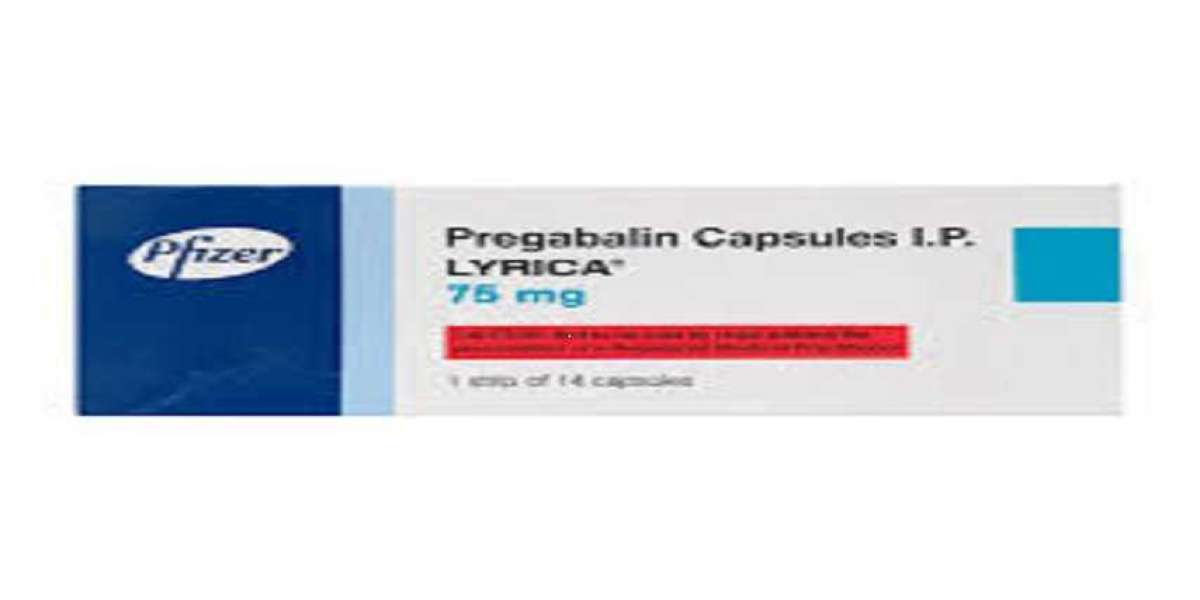Introduction
Shingles, also known as herpes zoster, is a viral infection that causes a painful rash. It is a reactivation of the varicella-zoster virus, which causes chickenpox. After chickenpox resolves, the virus lies dormant in nerve tissues and can reactivate years later as shingles. One of the most debilitating complications of shingles is postherpetic neuralgia (PHN), a chronic nerve pain that can persist long after the rash has healed. Lyrica (Pregabalin) 150 mg is commonly prescribed to manage this nerve pain effectively. This essay delves into the mechanism of action, dosing guidelines, efficacy, safety, and patient management strategies for using Lyrica 150 mg in treating shingles nerve pain.
Mechanism of Action
Lyrica, an anticonvulsant and neuropathic pain agent, functions by binding to the alpha-2-delta subunit of voltage-gated calcium channels in the central nervous system. This binding inhibits the release of excitatory neurotransmitters such as glutamate, norepinephrine, and substance P. By reducing the release of these neurotransmitters, Lyrica helps to stabilize neuronal hyperexcitability, which is a key factor in neuropathic pain, including PHN.
Indications for Lyrica
While Lyrica is approved for various conditions, including epilepsy, fibromyalgia, and generalized anxiety disorder, its use in managing neuropathic pain associated with shingles is particularly noteworthy. Postherpetic neuralgia can significantly impact a patient's quality of life, making effective pain management crucial.
Dosing Guidelines
Initial Dosing
For the management of shingles nerve pain, the recommended initial dose of Lyrica is 75 mg twice daily (150 mg/day). Starting at this lower dose helps to mitigate potential side effects and allows the patient to adjust to the medication.
Titration
Depending on the patient’s response and tolerability, the dose may be increased to 150 mg twice daily (300 mg/day) within one week. For some patients, a further increase to 300 mg twice daily (600 mg/day) may be necessary to achieve optimal pain relief. However, doses above 300 mg/day should be carefully considered due to the increased risk of side effects.
Maintenance Dose
The maintenance dose for shingles nerve pain typically ranges from 150 mg to 300 mg per day, divided into two doses. The exact dose should be individualized based on the patient's response and any side effects experienced.
Special Populations
Renal Impairment
Because Lyrica is primarily excreted unchanged by the kidneys, dose adjustments are necessary for patients with renal impairment. Dosage recommendations are based on creatinine clearance (CrCl):
- CrCl ≥ 60 mL/min: No adjustment is needed
- CrCl 30-60 mL/min: 75 mg once daily
- CrCl 15-30 mL/min: 25-50 mg once daily
- CrCl 15 mL/min: 25 mg once daily or less
Administration
Lyrica can be taken with or without food. It is important to take the medication at the same time each day to maintain steady blood levels. Capsules should be swallowed whole, not crushed or chewed.
Efficacy of Lyrica in Shingles Nerve Pain
Clinical Studies
Multiple clinical studies have demonstrated the efficacy of Lyrica in managing postherpetic neuralgia. In these studies, patients receiving Lyrica reported significant reductions in pain intensity compared to placebo. The benefits of Lyrica were evident within the first week of treatment and continued throughout the study duration.
Real-World Evidence
Real-world data also support the use of Lyrica for PHN. Many patients report substantial pain relief and improved quality of life. Additionally, Lyrica's relatively rapid onset of action makes it a valuable option for managing acute exacerbations of pain.
Safety and Side Effects
Common Side Effects
Lyrica is generally well-tolerated, but some patients may experience side effects, including:
- Dizziness
- Somnolence
- Dry mouth
- Edema
- Blurred vision
- Weight gain
These side effects are usually mild to moderate and tend to diminish with continued use.
Serious Side Effects
Although rare, serious side effects can occur, such as:
- Angioedema (swelling of the face, mouth, and throat)
- Hypersensitivity reactions
- Suicidal thoughts or behavior
Patients should be monitored for these reactions, especially during the initial weeks of treatment.
Discontinuation
Abrupt discontinuation of Lyrica 75mg can lead to withdrawal symptoms, including insomnia, nausea, headache, and diarrhea. Therefore, it is recommended to taper the dose gradually over at least one week when discontinuing the medication.
Patient Management Strategies
Patient Education
Educating patients about Lyrica, its benefits, and potential side effects is crucial. Patients should understand the importance of adherence to the prescribed dosing regimen and be aware of possible side effects.
Lifestyle Adjustments
Patients should be advised on lifestyle adjustments that can help manage their condition, such as maintaining a regular sleep schedule, engaging in regular physical activity, and avoiding alcohol and recreational drugs.
Monitoring
Regular follow-up appointments are essential to monitor the efficacy and safety of Lyrica. This includes tracking pain intensity, assessing side effects, and adjusting the dose as needed.
Support Systems
Support from family, friends, and patient support groups can provide valuable emotional and practical assistance. Patients should be encouraged to connect with these resources.
Emergency Plan
Patients should have an emergency plan in place, including instructions for family members or caregivers on what to do in the event of severe side effects or allergic reactions.
Conclusion
Lyrica 150mg Capsule is a highly effective medication for managing shingles nerve pain. Its ability to stabilize neuronal hyperexcitability and reduce pain intensity makes it a valuable option for patients suffering from postherpetic neuralgia. By following the comprehensive dosing guidelines and patient management strategies outlined in this essay, healthcare providers can optimize the use of Lyrica 150 mg to improve patient outcomes and quality of life. Regular monitoring, patient education, and support are essential components of successful treatment with Lyrica, ensuring both efficacy and safety in managing this challenging condition.








